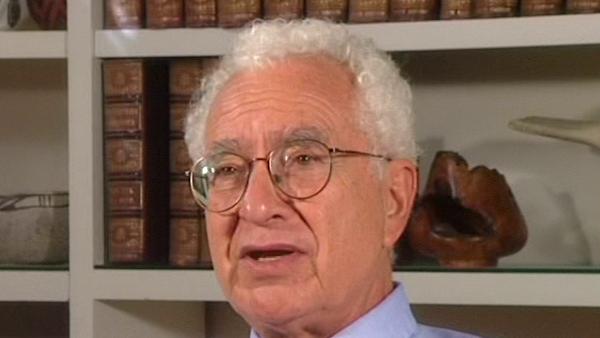NEXT STORY

Geoff Chew and mass shell field theory
RELATED STORIES

NEXT STORY

Geoff Chew and mass shell field theory
RELATED STORIES


|
Views | Duration | |
|---|---|---|---|
| 41. Learning about theory | 1796 | 01:02 | |
| 42. We never wrote up the crossing relations | 1237 | 02:24 | |
| 43. Quantum field theory on the mass shell | 1474 | 02:39 | |
| 44. Geoff Chew and mass shell field theory | 1274 | 00:47 | |
| 45. 1961 La Jolla meeting: taking Oppenheimer to lunch | 1588 | 02:02 | |
| 46. 1961 La Jolla meeting: Geoffrey Chew | 1404 | 01:45 | |
| 47. Stanley Mandelstam | 1621 | 01:11 | |
| 48. The bootstrap theory | 1578 | 02:20 | |
| 49. The assistant professorship at Chicago | 1174 | 02:53 | |
| 50. Working on the renormalization group with Francis Low | 1430 | 01:20 |


We were beginning to study quantum field theory on the mass shell, looking at scattering amplitudes on the mass shell, coming from all Feynman diagrams to all orders, and presumably therefore getting results that were true, non-perturbatively, non-perturbitively on the mass shell. So by 1955 we had crossing and we had dispersion relations, not only forward dispersion relations for a massless particle being scattered, but non-forward relations for a massive particle as well. And to that we then added a generalization of unitarity for scattering amplitudes, namely unitarity on the mass shell, for amplitudes on the mass shell, but carried away from real momenta into the complex momenta that you could get on the mass shell in… in these problems. Well, putting all of those together I suggested then at the Rochester meeting in 1956, having thought about it for quite a while, since ’55, I suggested that these three principles; the crossing, the dispersion relations, and the generalized unitarity could be used to characterize scattering amplitudes on the mass shell. One would get, they would be non-perturbatively correct. But of course, so as not to be pretentious, what I said at the meeting was that they were true to all orders. But what I meant of course was that they could be used non-perturbatively, and that therefore with the addition of a Born approximation to get started, or a condition at infinity or something like that, one could actually get a set of equations that would determine the scattering amplitudes in a given theory–but on the mass shell, without ever going off the mass shell. So this was a way of doing the whole of quantum field theory but staying on the mass shell. Well, I've looked at it that way ever since: it is quantum field theory on the mass shell. In the course of my talk at Rochester in early ’56–of course by that time I was at Caltech, but it was part of this same work–in the course of the talk I referred almost jokingly to Heisenberg and his use of the Breit-Wheeler S matrix. Because Heisenberg said, ‘Well you know, we don't have to derive the S matrix, we might guess it’. And, I was sort of, I thought it was sort of a joke to refer to this Heisenberg S matrix program in a sentence or two.
New York-born physicist Murray Gell-Mann (1929-2019) was known for his creation of the eightfold way, an ordering system for subatomic particles, comparable to the periodic table. His discovery of the omega-minus particle filled a gap in the system, brought the theory wide acceptance and led to Gell-Mann's winning the Nobel Prize in Physics in 1969.
Title: Quantum field theory on the mass shell
Listeners: Geoffrey West
Geoffrey West is a Staff Member, Fellow, and Program Manager for High Energy Physics at Los Alamos National Laboratory. He is also a member of The Santa Fe Institute. He is a native of England and was educated at Cambridge University (B.A. 1961). He received his Ph.D. from Stanford University in 1966 followed by post-doctoral appointments at Cornell and Harvard Universities. He returned to Stanford as a faculty member in 1970. He left to build and lead the Theoretical High Energy Physics Group at Los Alamos. He has numerous scientific publications including the editing of three books. His primary interest has been in fundamental questions in Physics, especially those concerning the elementary particles and their interactions. His long-term fascination in general scaling phenomena grew out of his work on scaling in quantum chromodynamics and the unification of all forces of nature. In 1996 this evolved into the highly productive collaboration with James Brown and Brian Enquist on the origin of allometric scaling laws in biology and the development of realistic quantitative models that analyse the influence of size on the structural and functional design of organisms.
Tags: Rochester meeting, Caltech, Werner Heisenberg
Duration: 2 minutes, 40 seconds
Date story recorded: October 1997
Date story went live: 24 January 2008